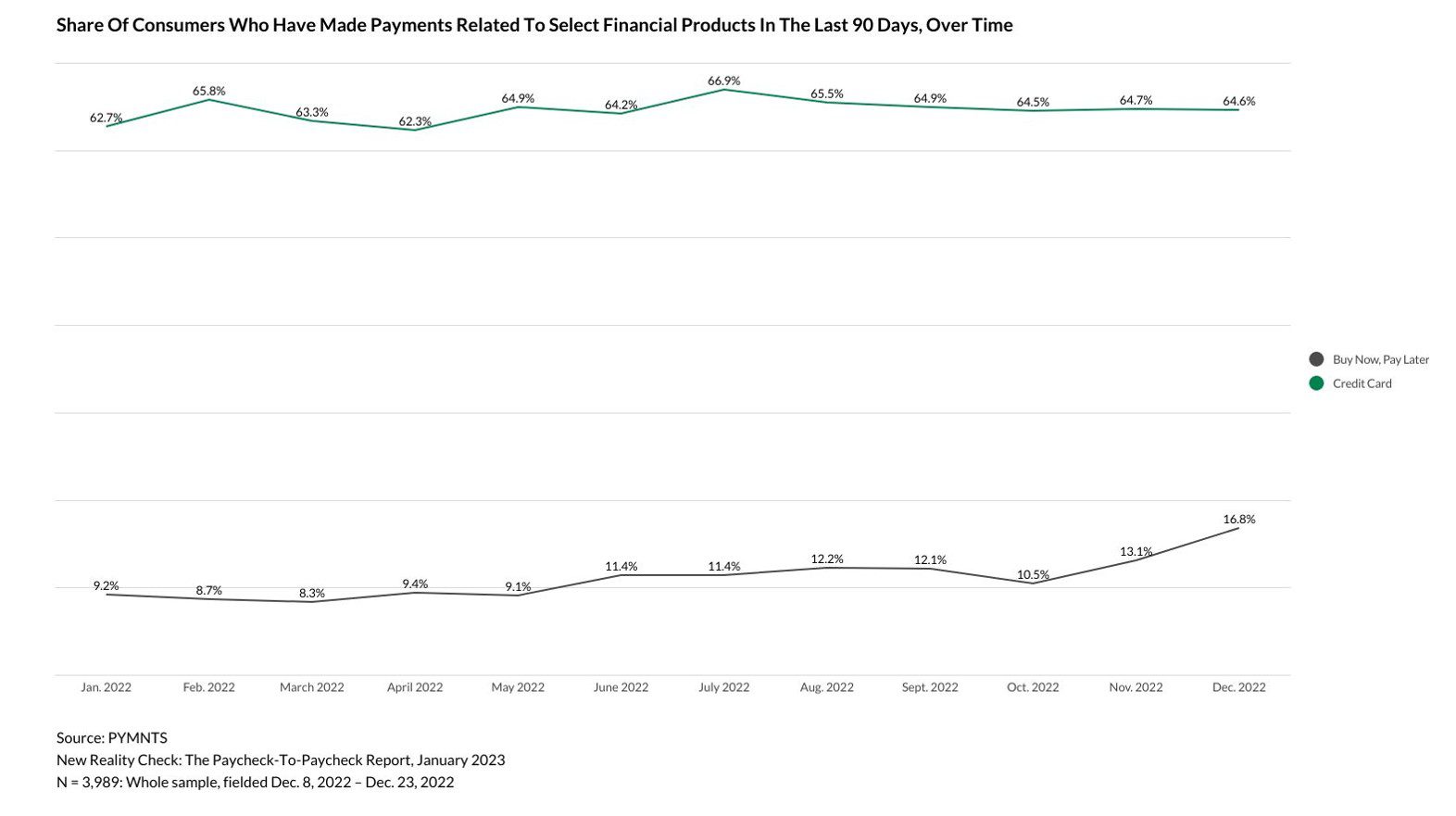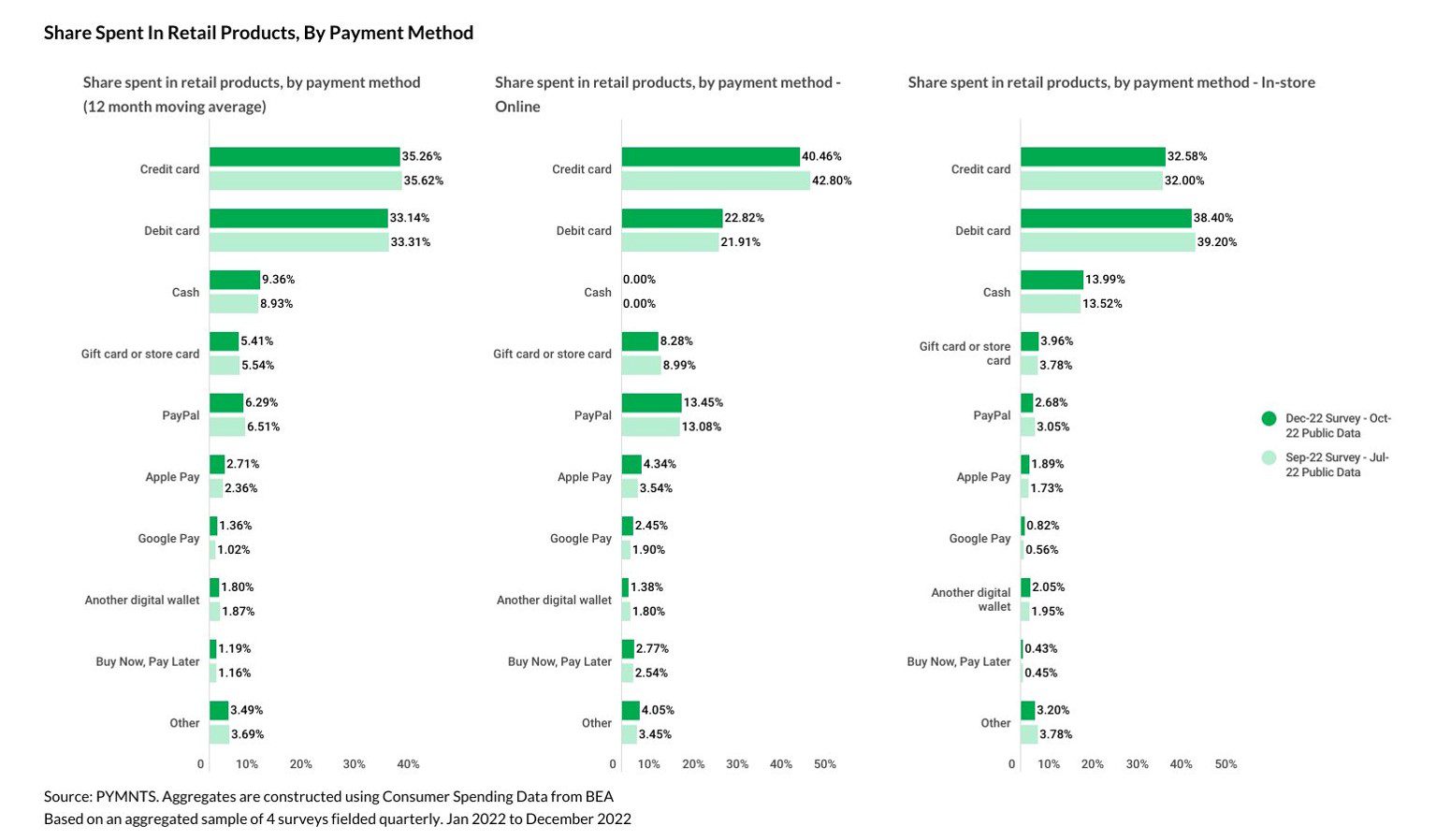Banks Want to Prove They Can Innovate Digital Wallets, But Can They?

One of the worst-kept secrets in payments was finally confirmed last week. That’s when Early Warning Services (EWS) announced its plans to launch a digital bank wallet in the second half of 2023 to challenge PayPal and named a former Mastercard exec as the CEO to lead the initiative. EWS is the digital payments platform owned by Bank of America, Capital One, J.P. Morgan, PNC, Truist, U.S. Bank and Wells Fargo. EWS operates the Zelle P2P network.
Details are scant, but the story broken by the Wall Street Journal said that those seven banks want to replace the current digital wallet “middlemen” with one of their own. The article quotes unnamed EWS spokespeople who say that the yet-to-be-named Bank Wallet (which is how I will refer to it) will offer the banks’ collective 150 million credit and debit card holders a new way to pay online.
There are a lot of smart people at each of these banks who’ve looked at the space and are presumably convinced there’s an opportunity for them to create a new way to pay. Anything’s possible — but if the past is prologue, I’m dubious.
Over the years, most of the key innovations in payments haven’t come from the banks, but from innovators who see a new opportunity to enable new ways to shop and pay using the card products issued by the banks. They figure out a smart way to ignite something new in the complex ecosystem called payments.
Examples include Square and the white dongle. Stripe and Braintree and mobile payments. Uber and using invisible payments to blend the physical and digital worlds. Starbucks with mobile payments and rewards. Amazon and One-Click Checkout. PayPal and digital wallets. Venmo and P2P payments. Splitit with Installments. Affirm, Afterpay, Klarna and Sezzle with BNPL.
So, what’s more relevant than the EWS announcement itself is an examination of what’s actually required of the banks who want to innovate like PayPal did a quarter century ago and innovators have done more recently, to launch and ignite a new payments network that can compete with it — beyond the usual PR patter.
Starting with the basics of what it means to get a network off the ground.
The Bank Digital Wallet Has a Cold Start Problem
Platform dynamics 101: To ignite, a platform must get all stakeholders on board pretty quickly. That’s hard. And it’s why there are only a handful of global payments networks operating at scale today. The challenge for the Bank Wallet is that they are starting from scratch — with no sides on board.
Despite the PR talking points, it’s inaccurate to think that the seven banks, individually or collectively, are starting with any side of this new two-sided payments network on board.
Those seven banks may collectively have 150 million customers using their debit and credit cards at a variety of merchants on and offline — but so what, big deal. Those customers must be persuaded to create an account — or activate one, depending upon how it is introduced — and then use Bank Wallet most of the time they shop online instead of the online payments options they use today at checkout. There’s even more to overcome because consumers are already using those bank cards with other wallets today, so that those cards aren’t themselves a competitive advantage.
Just ask Apple how thinking that they had all consumers with an iPhone on board with Apple Pay has turned out. Today, fifty percent of U.S. consumers have an iPhone. It is literally impossible to upgrade the iOS operating system without installing the Apple Pay Wallet and then being badgered to put in a card. Apple Pay, therefore, has consumers with the potential to use Apple Pay in store and online — with the wallet on the first page of their home screen — but not enough of them have the appetite or the incentive to pop it open and use it.
Then, of course, there is the chicken and egg of getting merchants on board so that consumers can use Bank Wallet at the places they like to shop. Will it be accepted at Amazon, which accounts for around half of eCommerce sales, and where even the PayPal digital wallet isn’t accepted? Will consumers be able to use it at Walmart?
Those two big online merchants aside, all merchants — or at least enough of them to account for the places consumers like to shop — will have to be convinced that people will use it and that it is worth their time to integrate and support it. That could be tricky, especially as retailers face their own resource challenges and tradeoffs when presented with new POS initiatives.
Especially when there’s no guarantee that doing so will drive incremental sales and customers.
Bank and Card Network Checkout Buttons Don’t Have a Great Track Record
It wasn’t that long ago that merchant checkout pages looked like cars racing around the NASCAR track with multiple buy buttons competing for the checkout click. Starting in about 2014, those buttons included Visa Checkout, Mastercard’s Masterpass, Chase Pay, Samsung Pay, Google Pay, PayPal, followed by Amazon Pay, ShopPay, Facebook Pay, and more recently Secure Remote Checkout. Many merchants were given incentives to add those buy buttons to their pages, but over time removed those that few consumers used. Card network and bank buy buttons were among the first to fade away.
Today we see a more curated collection of checkout options that consumers like and use, including PayPal, BNPL brands, cards on file and credentials stored in their browser — all of which makes shopping online familiar, quick, secure and convenient. Is there room for a challenger?
Of course.
Consumers like and want to try new ways to shop and pay online, especially Millennials and Gen Z — if those new ways offer value, eliminate friction and create a better experience. For example, the latest PYMNTS data shows an appreciable increase — from 1% to 3% of all online retail purchases — in the use of Buy Now, Pay Later products in the last 12 months in the U.S. because BNPL offers consumers a new payments value proposition that many consumers really like.
That said, cards remain the go-to for consumers in the store and online — because they work, and consumers trust and know how to use them.
So the bar is high for any new entrant, including Bank Wallet. The new way to pay must be value-added, deliver a reimagined seamless, embedded checkout experience, and be accepted at all the places they like to shop. A payments experience that isn’t simply as good as what consumers use today, but exponentially better.
Not another me-too button that is the same old same old, only from their bank.

Bank Wallet Has to Be Customer-Focused, Not Competitor-Obsessed
One of my favorite articles is one I wrote in 2013 called the MCX Fairy Tale. That was when the big merchants banded together to launch the merchant wallet operated by MCX. A few name changes (remember ISIS?) and who knows how many millions of dollars later, MCX crashed and burned.
And why? The value proposition started with what was good for the merchants — sticking it to Mastercard and Visa — and not with creating value for the consumer.
I must admit that when I first read the news of EWS and the Bank Wallet, it felt a little like the bank version of MCX and déjà vu all over again. Blame it on the reporting, perhaps, but the announcement focused not at all on the cool things Bank Wallet will do for consumers. It seemed much more about reclaiming the customer relationship from the “middleman” the seven banks now perceive as the enemy, rather than the enablers of billions of dollars of volume using their cards as registered credentials when they pay online.
The announcement also struck me as the latest attempt to elevate Early Warning’s profile as a payments technology player. Especially given its six-year struggle to drive ubiquity and share with its P2P network Zelle — and its more recent regulatory and lawmaker backlash.
Zelle has failed to crack the hold on P2P that PayPal, Venmo, Square Cash and more recently Apple Cash has. PYMNTS data shows that PayPal (including Venmo) is used four times more frequently to send money to friends or other people than Zelle. Unlike Zelle, those providers make it easy to send money to just about anyone.
Sources report that today only 20% of all banks support Zelle, with many smaller banks resisting over the high cost of integrating and supporting it. The lack of ubiquity creates uncertainty for users who don’t know whether they will be able to send money to someone or receive it from someone when they try to use Zelle. That’s friction. And unless both senders and receivers are connected to a bank with Zelle, the experience is clunky, confusing and time-consuming.
Further complicating the P2P landscape for Zelle, regional banks and credit unions are trying to make a go of their own P2P network called Chuck, while at the same time money mobility networks like Ingo are using disbursement rails to enable P2P outside of a closed-loop network.
All that means that Zelle is likely feeling the pressure to monetize its network and drive a return on its investment to the banks that own it.
Bank Wallet Must Recognize the Value of Time as a Currency in Igniting It
The announcement of Early Warning’s Bank Wallet initiative drew a very explicit distinction between EWS as the operator of the Zelle network and EWS as the operator of the new digital wallet initiative using credit and debit cards that would be separate and distinct from it.
My guess is that the idea of launching a bank digital wallet in its early whiteboard days didn’t have as much to do with cards as it did with moving consumers away from cards and the card networks, and towards bank rails and account-to-account payments, including payments to merchants.
But the toxicity of the Zelle brand in consumer and policymaker circles over push payments fraud may have forced a change in direction.
My hypothesis is that the discussion of cards was a late stutter step, a course correction to establish a digital wallet proposition for the banks to move consumers to a new digital payments platform using cards first, then transition to a pay-by-bank platform. I believe that would only exponentially complicate the ignition of this new payments network.
Assuming that enough consumers establish a bank digital wallet — and enough merchants accept it to make using it a better deal for them than the existing alternatives — moving consumers to a pay-by-bank option is another big lift. Even if there is an alias between the consumer and the merchant. Even if the pay-by-bank option is a substitute for the purchases they make with debit cards today.
Consumers don’t understand how payments work, and they don’t trust merchants to keep their information, including their payments credentials, private and secure.
But consumers do understand how payments — including fraud, chargebacks, refunds and disputes — work when they use their cards. That’s why they use them. Getting consumers comfortable with a new way to pay, when funds are taken directly from their checking account, will only scale if consumers are given the same conveniences and protections as they have today with cards.
Then — assuming all that works — getting consumers on board, getting merchants on board, incenting both to use and adopt and then growing at scale will take time. Years.
After eight-going-on-nine years, Apple Pay use in store accounts for less than 3% of retail sales and 4.5% of online sales.
Meanwhile, it’s taken PayPal a quarter of a century to get to 13.5% of online retail sales. For both Apple Pay and PayPal, cards in the store and online remain the entrenched favorite way to pay — even though according to PYMNTS’ latest data, PayPal is the accepted and used digital wallet option by a ratio of 3 to 1 when compared to other mobile wallets.

And both PayPal and Apple Pay are looking over their digital shoulders at the ways in which embedded payments and finance are disrupting the digital experience, too. And massive online players look at payments as an enabler to their own commerce ambitions, including existing commerce players who seek to expand their reach outside of traditional retail. The competitor for Bank Wallet to beat isn’t just PayPal and Apple Pay, but the schemes both known and unknown that are taking payments into new connected endpoints as more of the consumer’s everyday activities move digital.
What’s Next for Bank Wallet and Digital Payments
The silver lining to the pandemic, if there is one, is the ingenuity of business leaders and entrepreneurs who used the forced shift to digital to unlock new payments innovations. A new cohort of digital-first consumers has emerged and taken those digital preferences into the physical world. A PYMNTS study of more than 13,000 consumers and 3100 merchants in six countries, conducted in collaboration with Visa’s CyberSource, finds that digital features influence how and where consumers shop. Payments choice is the key driver of those experiences across all six countries for the third consecutive year.
I believe that 2023 will mark the beginning of a new way of innovating payments because business leaders and entrepreneurs will be forced to think more carefully about how they bring new ideas to market. Everyone is feeling the pressure to produce results, at scale, with profits. No one, including the banks, has money to burn on new projects that can’t get off the ground in a timeframe that is relevant for their business — and the pace at which the digital economy is growing. That’s particularly true for these seven banks, all of which have other digital payments initiatives and ambitions competing for time and money.
Can the Bank Wallet be a major player in the drive to innovate the digital economy in the U.S.? That depends on whether they have a healthy respect for what it takes to create and operate a payments network at scale.
In the meantime, I will be anxious to find out what they decide to call this new network. I can almost guarantee you it won’t be called Zelle.
